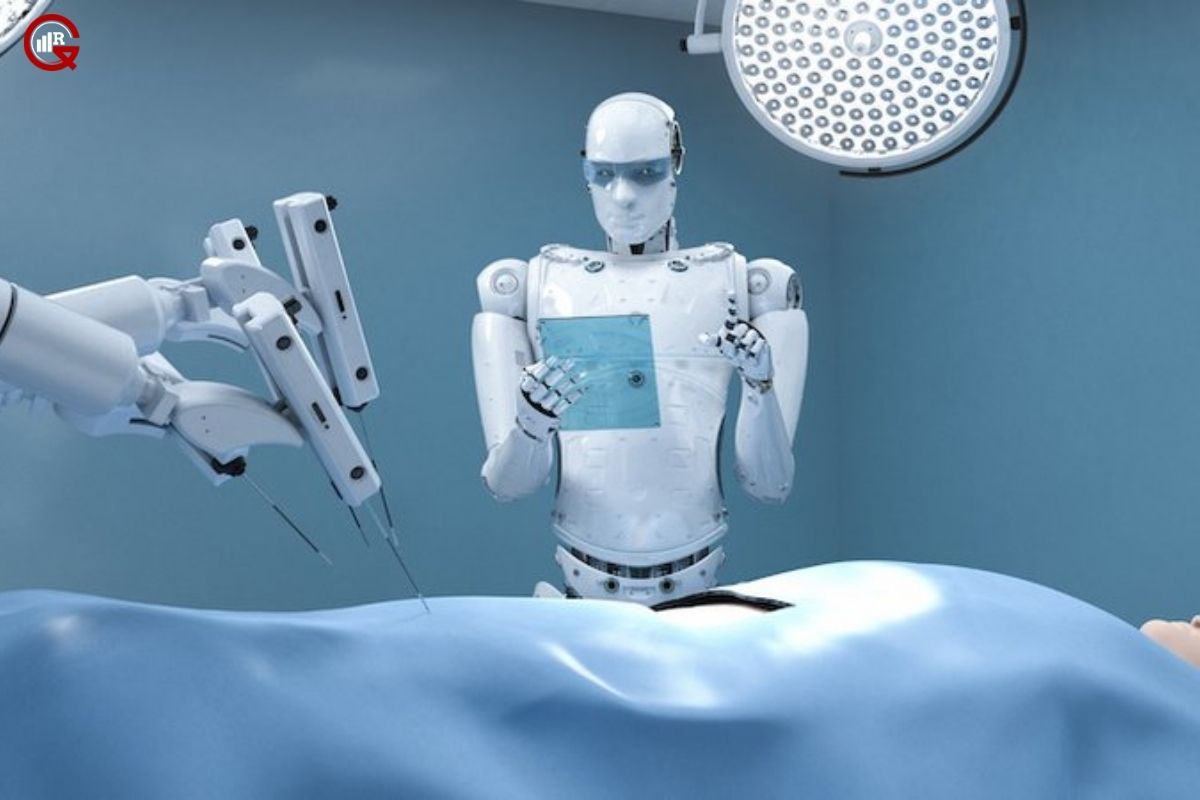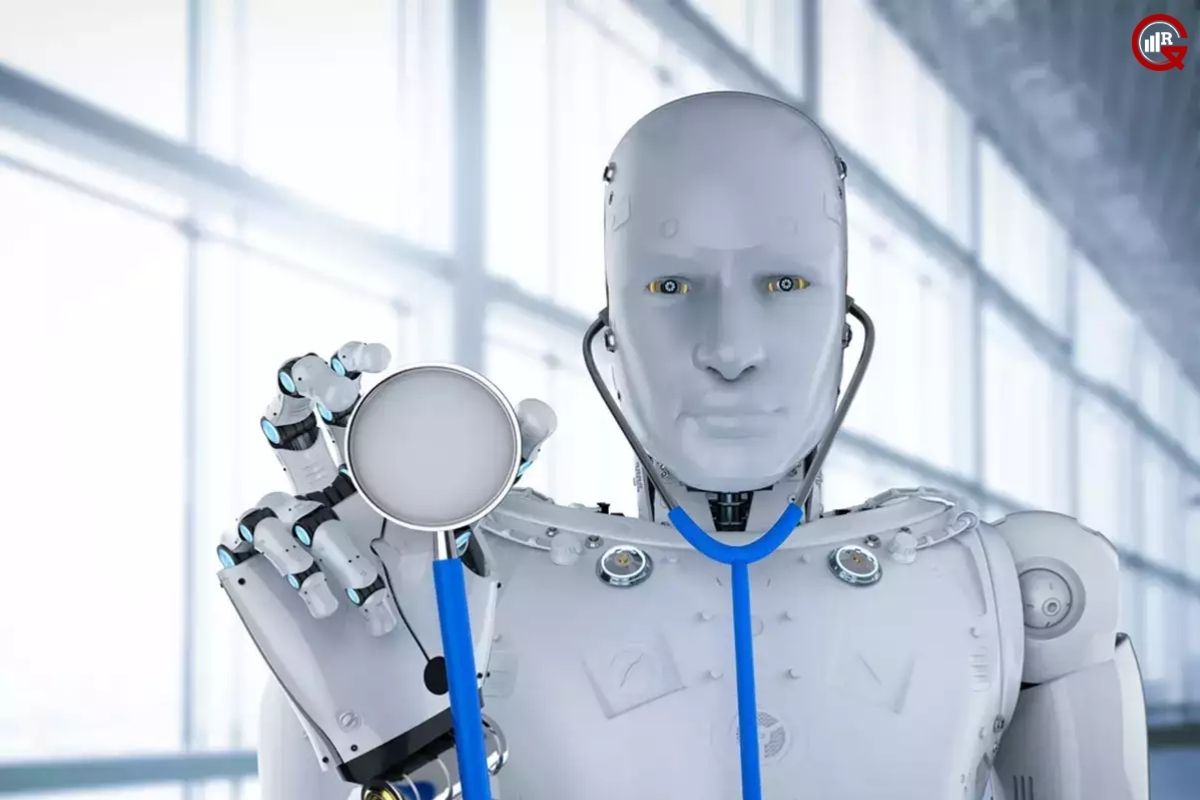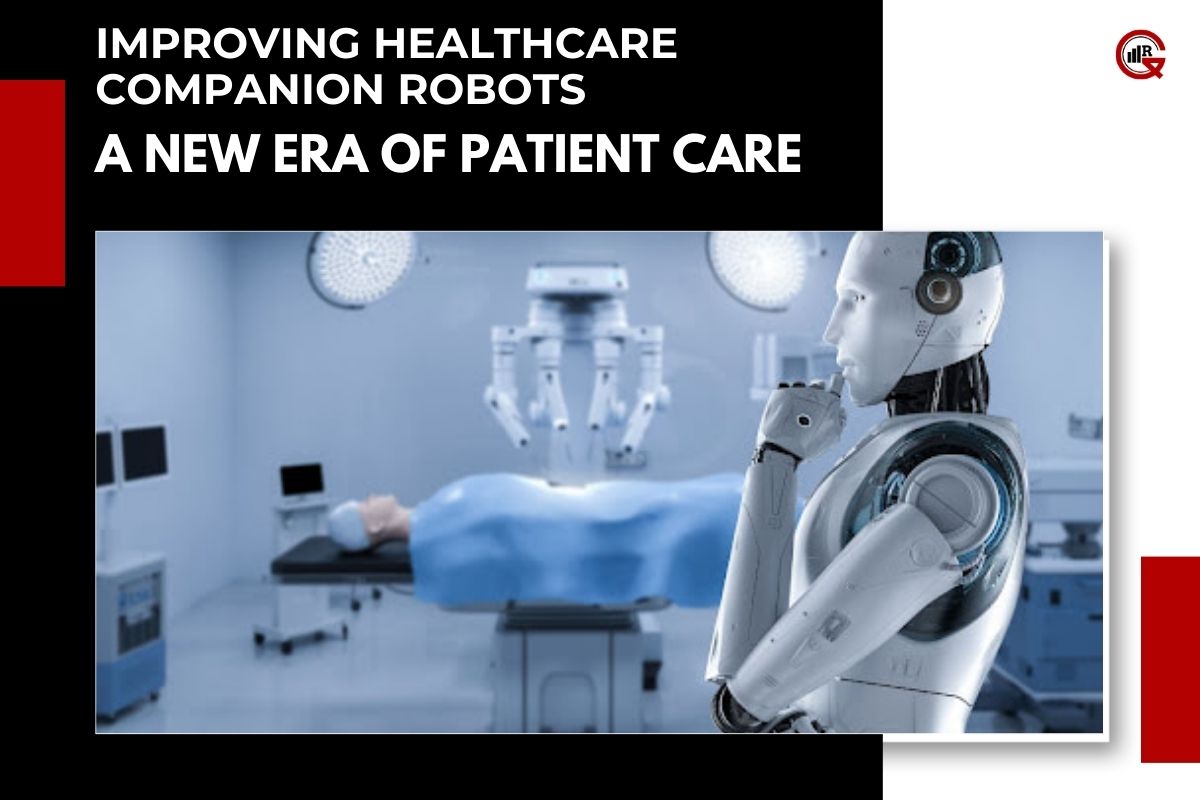(Source – [x]cube LABS)
In recent years, the integration of robotics into healthcare has led to transformative advancements in patient care. One area that has garnered significant attention is the development and deployment of healthcare companion robots. These robots, equipped with advanced artificial intelligence (AI) and interactive capabilities, are revolutionizing the way patients interact with caregivers, manage their health, and experience medical environments. Healthcare Companion Robots article explores the role of companion robots in healthcare, their potential benefits, challenges, and future implications.
The Emergence of Healthcare Companion Robots
Healthcare companion robots are a product of the convergence of robotics, AI, and healthcare technology. Initially developed for research purposes and assistance in elderly care, these robots have evolved to become integral members of healthcare teams in hospitals, clinics, and assisted living facilities. Designed to provide physical assistance, emotional support, and companionship, these robots offer a wide range of functionalities tailored to meet the diverse needs of patients and healthcare professionals.
Key Features and Functionalities
Personalized Interaction
Healthcare companion robots are programmed to engage in personalized interactions with patients, catering to their individual preferences, needs, and emotional states. Through natural language processing and speech recognition capabilities, these healthcare robots can engage in conversations, answer questions, and provide information about medical conditions, treatment plans, and medication schedules. This personalized interaction helps alleviate feelings of loneliness, anxiety, and isolation often experienced by patients in healthcare settings.
Assistance with Activities of Daily Living (ADLs)

Many companion robots are equipped with physical capabilities that enable them to assist patients with activities of daily living (ADLs). These robots can help patients with mobility issues by providing support with walking, transferring between beds and chairs, and retrieving items from shelves or cabinets. Additionally, some robots are equipped with robotic arms and grippers that enable them to assist with tasks such as feeding, dressing, and personal hygiene, enhancing patient independence and quality of life.
Monitoring and Reminders
Healthcare companion robots can serve as virtual caregivers, continuously monitoring patients’ vital signs, movement patterns, and activity levels. Using sensors and cameras, these robots can detect changes in health status and alert healthcare providers or family members in real time in case of emergencies or abnormal findings. Moreover, companion robots can remind patients to take their medications, attend medical appointments, and perform rehabilitation exercises, helping improve medication adherence and treatment compliance.
Entertainment and Social Engagement
In addition to providing practical assistance, healthcare companion robots offer entertainment and social engagement to patients, serving as sources of companionship and emotional support. These robots can play music, videos, and games, tell stories, and engage in recreational activities with patients, helping alleviate boredom and improve mood. Furthermore, companion robots can facilitate social interactions by connecting patients with family members, friends, and other patients through video calls, messaging, and social media platforms, reducing feelings of social isolation and loneliness.
Benefits of Healthcare Companion Robots
Improved Patient Outcomes
Companion robots have been shown to contribute to improved patient outcomes by enhancing communication between patients and healthcare providers, promoting medication adherence and treatment compliance, and supporting patients’ physical and emotional well-being. Studies have demonstrated that patients who interact with companion robots experience reduced stress, anxiety, and depression levels, leading to faster recovery times and better overall health outcomes.
Enhanced Caregiver Efficiency
By automating routine tasks and providing assistance with patient care activities, companion robots can help healthcare professionals optimize their workflow and improve efficiency. These robots can perform tasks such as taking vital signs, administering medication, and assisting with mobility, allowing caregivers to focus on more complex and specialized aspects of patient care. Additionally, companion robots can serve as virtual assistants, helping schedule appointments, organize medical records, and communicate with other members of the healthcare team, further streamlining care delivery processes.
Increased Patient Satisfaction

Companion robots contribute to increased patient satisfaction by providing personalized, compassionate care and fostering positive emotional connections with patients. Patients appreciate the companionship, support, and entertainment provided by these robots, leading to higher levels of satisfaction with their healthcare experiences. Moreover, companion robots can empower patients to take an active role in their care by providing them with access to information, resources, and tools to manage their health effectively, further enhancing their overall satisfaction with the healthcare system.
Challenges and Considerations
Ethical and Privacy Concerns
The use of healthcare companion robots in healthcare raises ethical and privacy concerns related to data security, patient autonomy, and informed consent. Healthcare organizations must ensure that patient information is protected against unauthorized access and misuse, and that patients are fully informed about the capabilities, limitations, and potential risks associated with companion robots. Additionally, concerns have been raised about the potential for companion robots to replace human caregivers and the impact of prolonged interaction with robots on patients’ emotional well-being.
Integration with Existing Systems
Integrating healthcare companion robots into existing healthcare systems and workflows can pose technical and logistical challenges. Healthcare organizations must ensure compatibility with electronic health records (EHR) systems, medical devices, and other digital health technologies, and address issues related to interoperability, data exchange, and system integration. Moreover, training healthcare professionals to effectively use companion robots and adapt to new care delivery models may require time, resources, and organizational support.
Cost and Accessibility
The cost of acquiring and deploying healthcare companion robots in healthcare settings can be prohibitive for some healthcare organizations, particularly smaller clinics, and facilities with limited budgets. Moreover, ongoing maintenance, upgrades, and support services may further increase the total cost of ownership over time. As a result, accessibility to companion robots may be limited to larger, more affluent healthcare organizations, potentially exacerbating existing disparities in access to healthcare services.
Future Directions and Opportunities

Despite the challenges and considerations, the adoption of companion robots in healthcare is expected to continue to grow in the coming years. Advances in robotics, AI, and human-computer interaction will further enhance the capabilities and functionalities of companion robots, making them indispensable members of healthcare teams. Moreover, the increasing prevalence of chronic diseases, aging populations, and healthcare workforce shortages will drive demand for innovative solutions that can augment and complement traditional care delivery models.
Conclusion
Healthcare companion robots represent a promising advancement in the field of healthcare technology, offering a wide range of functionalities and benefits to patients, caregivers, and healthcare organizations. By providing personalized assistance, enhancing patient engagement, and improving care delivery processes, companion robots have the potential to revolutionize the way healthcare is delivered and experienced. However, addressing ethical, technical, and accessibility challenges will be crucial to ensuring the responsible and equitable integration of healthcare companion robots into healthcare systems. As technology continues to evolve and innovation accelerates, companion robots will play an increasingly important role in shaping the future of patient care and healthcare delivery.






